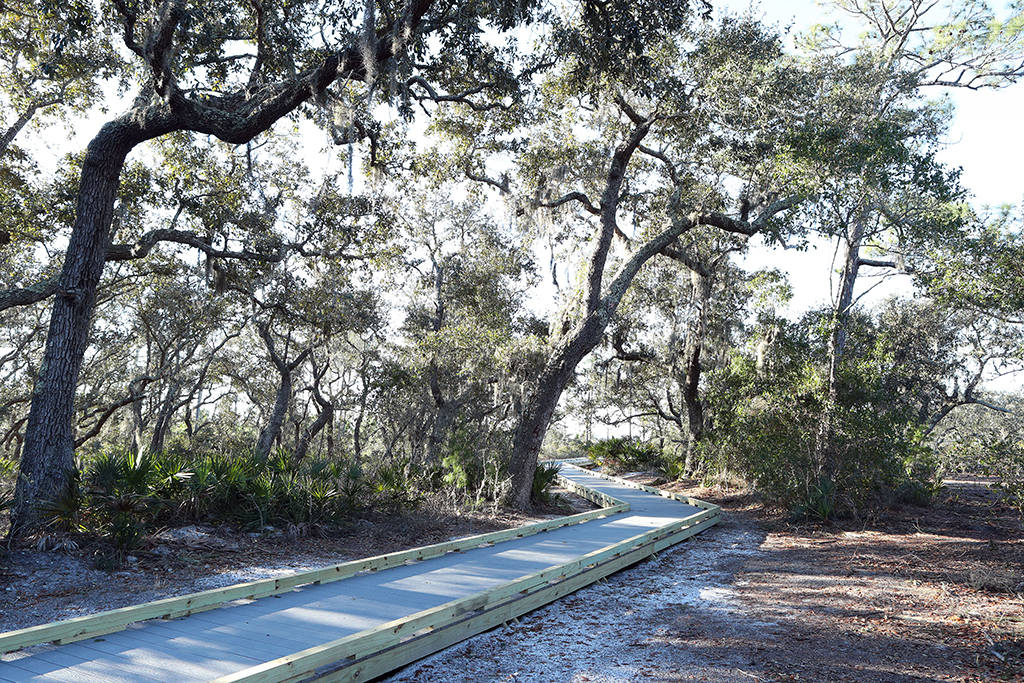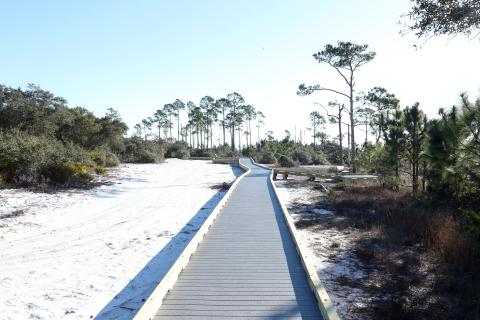In January, the Jeff Friend Trail at Bon Secour National Wildlife Refuge in Gulf Shores, Alabama, was re-opened after closing for restoration last fall. The project includes new longer-lasting composite material boardwalks, several new viewing platforms, and easier-to-navigate trail materials.
Replacement of this one-mile trail is one of the early restoration projects approved by the Trustees prior to the historic 2016 settlement with BP.
The project will enhance recreational use of the refuge because in the wake of the Deepwater Horizon oil spill, a lot of gooey oil  came ashore and cleanup activities took place, restricting public use of the refuge’s beach and shoreline. Approval and implementation of the Jeff Friend Trail restoration was meant to address some of that lost recreational use.
came ashore and cleanup activities took place, restricting public use of the refuge’s beach and shoreline. Approval and implementation of the Jeff Friend Trail restoration was meant to address some of that lost recreational use.
Prior to the oil spill, the Jeff Friend Trail was a popular destination for visitors and local schools. This restoration project prioritized enhancing accessibility all along the length of the trail so more people would be able to connect with the refuge’s migratory birds and picturesque maritime forest and Little Lagoon
In 2011, BP agreed to provide $1 billion to start early restoration projects before the full natural resource damage assessment was complete. By adding some of these early restoration dollars with those from the U.S. Fish and Wildlife Service’s Deferred Maintenance Fund, the Department of the Interior was able to apply $890,000 to the rehabilitation, which included a four month closure to demolish the old and weathered boardwalk, and scrape and level the uneven gravel trail before construction of the new facilities.
Herb Malone, President of Gulf Shores and Orange Beach Tourism, spoke at the reopening event of the importance of Bon Secour Refuge and the trail to the local economy. Malone said that in southern Alabama where birders out-number golfers, the refuge’s amenities help attract visitors that are important to the local economy. Another speaker, Refuge Manager Jereme Phillips, noted that the renovated trail is expected to draw visitors to the refuge from across the United States and the world.


